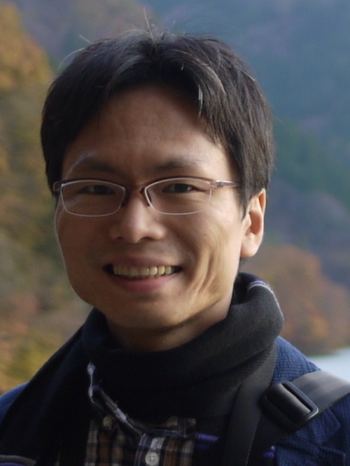Jihwan Myung

Apr. – Jun. 2017
I have been working on how time is processed in the brain. My initial model system was the circadian clock network, where I showed that clocks do not always agree on time and the degree of disagreement represents the seasonal time. My recent research on cognitive consequences of time processing has led me to issues in consciousness and neuroscientific interpretation of epistemology.
Education
2012
PhD in Life Sciences, Kyoto University, Japan
2007
MS in Physiology and Biophysics, University of Washington, USA
2005
MS in Physics, POSTECH, Korea
2002
BS in Physics, Korea University, Korea
Academic Positions
2016 – 2017
Fellow, Wissenschaftskolleg zu Berlin, Germany
2016 – 2017
Visiting Researcher, Okinawa Institute of Science and Technology, Japan
2013 – 2016
Research Scientist, RIKEN Brain Science Institute, Japan
2012 – 2013
Assistant Professor, Hiroshima University, Japan
With chronobiologist Hanspeter Herzel and musicologist Jin Hyun Kim, we would like to explore how biological rhythms and music are entangled through the history of time. The rhythms in our body have a natural time scale set by how the neurons and muscles are constructed. One example is vocal tremor. Music is a temporally organized code that expresses our internal mood states, but it also exploits these biological features to enrich its performance. The evolution of music can be compared to the evolution of humanity, and the ancient and various ethnic forms of music can be studied in connection with the principles of biological rhythms. Since music has been the window into consciousness, we hope this interdisciplinary study develops into a long-term research for the subjectivity of time. The approach we take is not abstract but concrete, since the context of time we focus on is based on musical structures and biological constraints.
Forschungsschwerpunkte
Neuroscience, Chronobiology, Molecular Biology, Computational Biology
2015
A. Azzi/J. A. Evans/T. Leise/J. Myung/T. Takumi/A. J. Davidson/S. A. Brown, "Network Dynamics Mediate Circadian Clock Plasticity", in: Neuron. 93 (2017) 441–450.
J. Myung/S. Hong/D. DeWoskin/E. De Schutter/D. B. Forger/T. Takumi, "GABA-mediated Repulsive Coupling between Circadian Clock Neurons in the SCN Encodes Seasonal Time", in: Proc. Natl. Acad. Sci. USA 112 (2015) E3920–E3929.
D. DeWoskin/J. Myung/M. D. C. Belle/H. D. Piggins/T. Takumi/D. B. Forger, "Distinct Roles for GABA across Multiple Timescales in Mammalian Circadian Timekeeping", in: Proc. Natl. Acad. Sci. USA 112 (2015) E3911–E3919.
2014
A. Goriki/F. Hatanaka/J. Myung/J. K. Kim/T. Yoritaka/S. Tanoue/T. Abe/H. Kiyonari/K. Fujimoto/Y. Kato/T. Todo/A. Matsubara/D. Forger/T. Takumi, "A Novel Protein, CHRONO, Functions as a Core Component of the Mammalian Circadian Clock", in: PLoS Biol. 12 (2014) e1001839.
2012
J. Myung/S. Hong/F. Hatanaka/Y. Nakajima/E. De Schutter/T. Takumi, "Period Coding of Bmal1 Oscillators in the Suprachiasmatic Nucleus", in: J. Neurosci. 32 (2012) 8900–8918.
